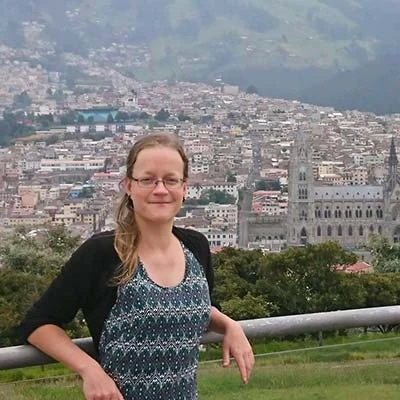
Like last year, I spent the Carnival holidays in Quito this year. I was eager to see the program without pandemic-related restrictions.
On Quito-cultural, I had informed myself about the individual activities, although I had the impression that the program was more extensive last year.
International carnival parade in the Mariscal
Saturday’s schedule included an international carnival parade in the popular Mariscal neighborhood. The parade was scheduled to start at 11:00 a.m. and to move along Amazonas Street from Colon Street to El Ejido Park. At the starting point, many costumed or decorated parade participants had already gathered. Also, decorated Chivas – converted truck trailers – were waiting.
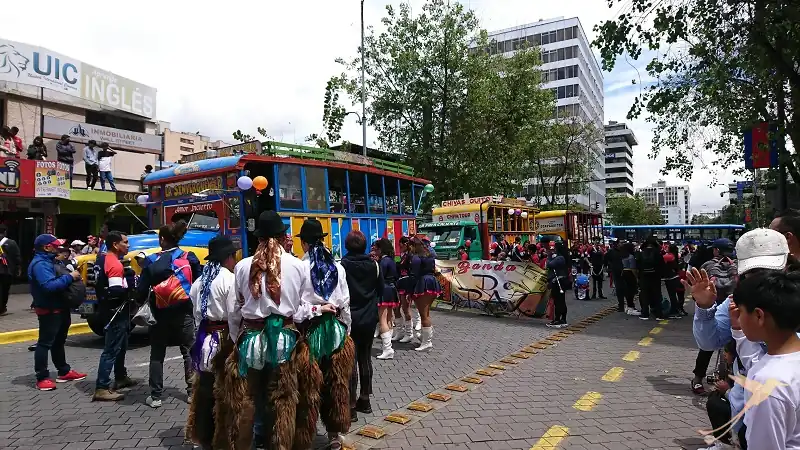
Soon the parade started moving and it was really quite a colorful spectacle. In addition to various regions, some organizations were also represented, such as an environmental association, the fire department, as well as municipal officials.
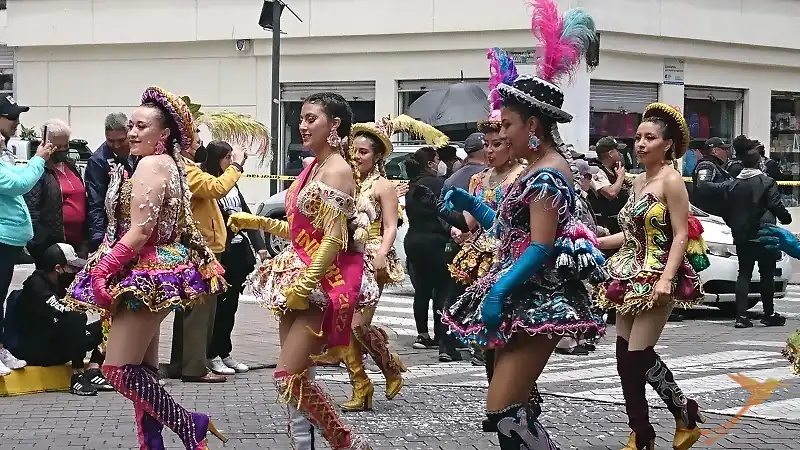
I followed the procession for quite a while to El Ejido Park, and from there I drove to the old town. At the edge of the Plaza Grande there were some market stalls with products from the rainforest region. In the description this had been a bit more extensive and since it had also just started to rain, I didn’t stay here that long and rather decided to save some energy reserves for the next days.

Carnival in the old town
On Sunday morning I first went – independent of the carnival activities – Salsa dancing in the park to Gabriela Mistral in the Mariscal. Then I arranged with some friends to visit La Ronda in the evening. One of the friends works at the entrance of a restaurant in which regularly live music is taking place and now, on the carnival weekend, it was expected to be a particularly good atmosphere.
Around 8:00 pm, we arrived in the center. Actually, today there was another parade in the program but either we had missed it or it did not take place.
As we approached the Plaza San Francisco, many more or less dirty, wet and foam-covered people passed us – on the Plaza carnival was intensively “played” as they say here, with cariocas (foam spray cans), color powder, grease and eggs.
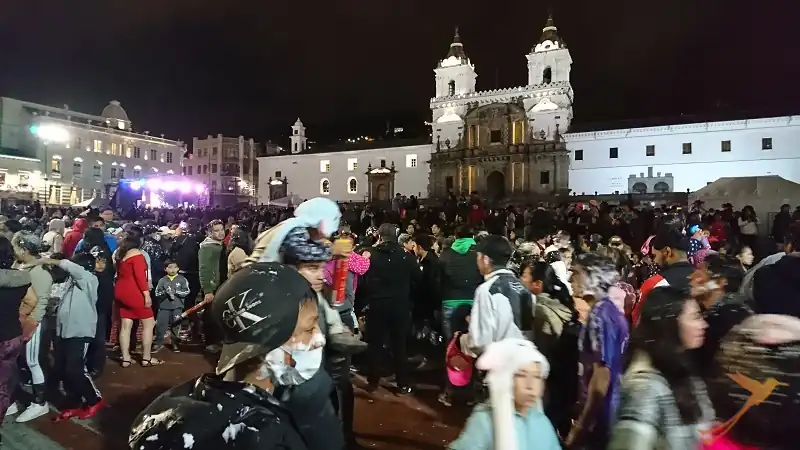
On a large stage, a moderator and some musicians provided the entertainment. The place was crowded, and it was pretty wild, although not quite as extreme as in other places in the country. Since we wanted to arrive as far as possible clean and dry in the Ronda, we kept more on the edge of the scene and did not stay too long.
The small pretty alley La Ronda itself was then also quite busy, and we received some foam but were fortunately not soaked.
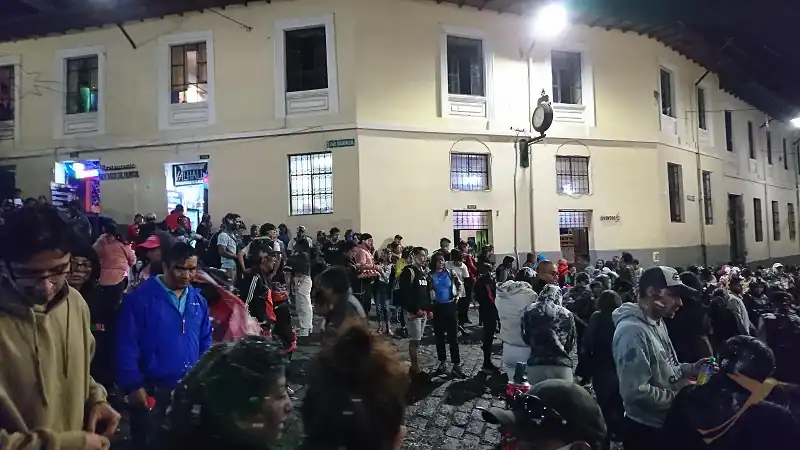
When we arrived at the restaurant, the live music was just beginning. Classics from the region were played, such as salsa and merengue. The drink of the night was the traditional canelazo, a hot beverage made of naranjilla or another sour fruit, cinnamon, panela and sugar cane liquor. Time passed, the mood rose, and there was dancing without pause. The musicians themselves played with great persistence and energy for almost 3 hours at a stretch. In the restaurant, there was even another room with live music. A little quieter but also very good – unfortunately only with little audience. After several hours of dancing, my legs finally didn’t want to continue anymore, and I took a cab home. All in all, it was a very nice and atmospheric evening.
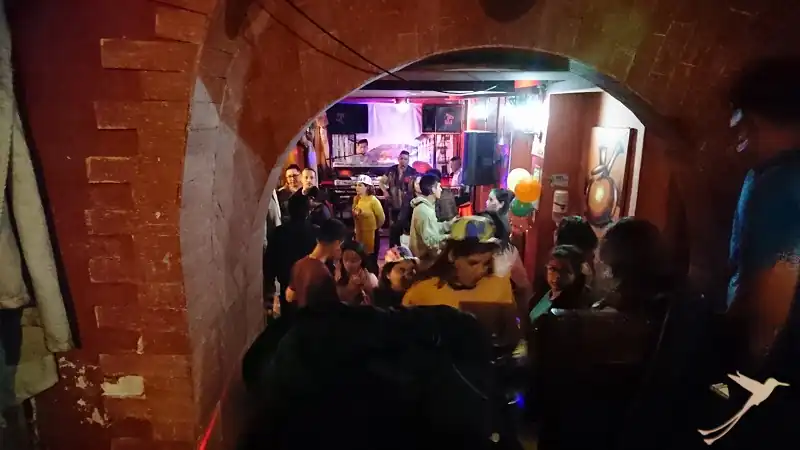
On Monday there were not many activities on the schedule, and so I went to Papallacta with some friends.
Sweets workshop at the Museum del Carmen Alto
On the last carnival holiday, I was looking forward to a small workshop on how to prepare a traditional sweet at the Museum del Carmen Alto. The activity was scheduled to start at 12 noon.
I was there a little earlier, so I had the opportunity to visit the location. The museum is a convent complex where nuns still live today. In the part that can be visited, there is a collection of sacred art, mainly paintings and some sculptures. There are also recreations of different areas of the monastery where the daily life of the nuns took place.
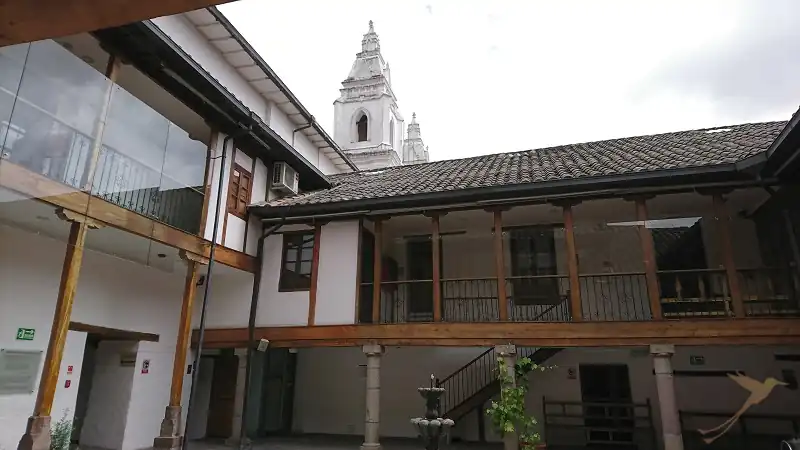
Prior to the workshop, there was a short-guided tour through these rooms, such as the dining room, the serving room and the kitchen.
A wide variety of tools and kitchen utensils are exhibited, and dishes and food are vividly represented. All in all, a very illustrative exhibition. The guided tour was also very lively and entertaining, so that one could well imagine the life of the nuns.
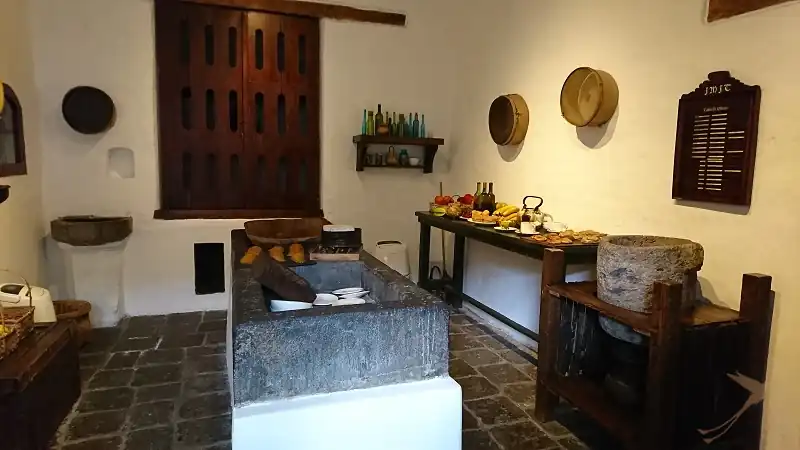
After about half an hour, we all went to an area of the courtyard where the ingredients and utensils for the sweets’ workshop have already been arranged. “Sambo de dulce” was to be prepared.
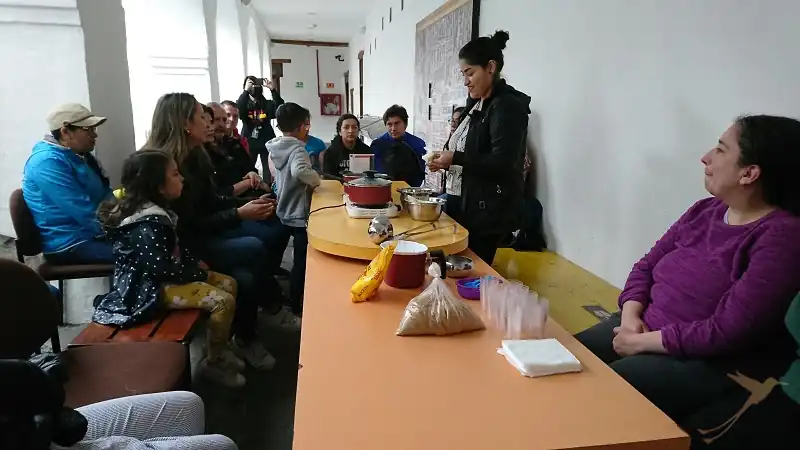
The sambo, a pumpkin-like fruit, was cut into pieces for this and boiled in water or milk until it gets a soft, almost pulpy consistency. For the workshop, this had already been prepared, because otherwise it would have taken too long. Some pimento seeds and cinnamon are added, as well as panela. To thicken it, first dissolve maicena (cornstarch) in some milk and then add it to the sambo mixture, stirring constantly. Boil it briefly, let it cool a bit, and then the candy, actually more of a sweet drink, is ready to serve. During the workshop, the Sambo de Dulce was put into little jars, so everyone could taste – yum! This was my personal ending to this year’s Carnival holiday.
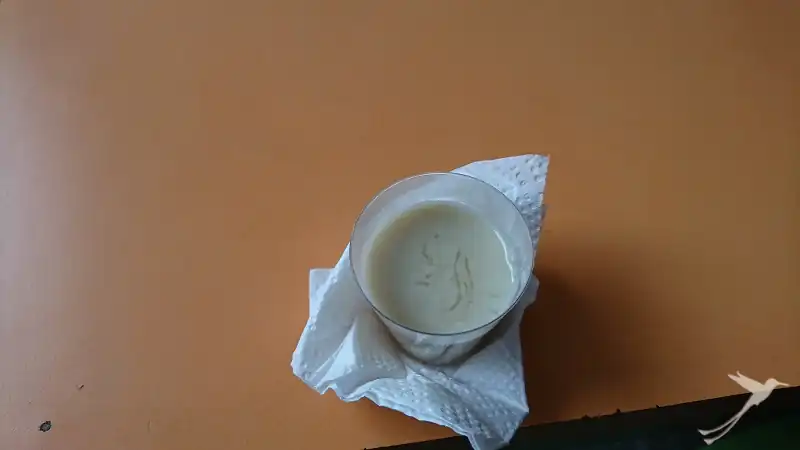
Overall, it was a rather quiet but still pretty interesting carnival in Quito. If this is too quiet or boring for you, you can go to Guaranda or other places in the Sierra around the carnival holidays. There it is much wilder and wetter. Or you can visit the “Carnaval de las Flores y las Frutas” in Tungurahua- Ambato – certainly an interesting alternative.







